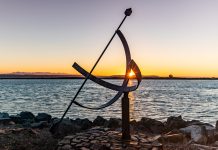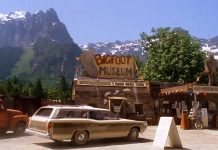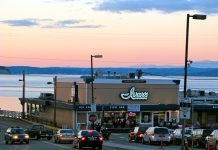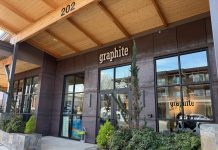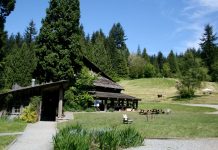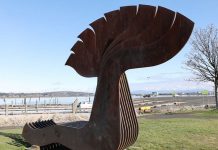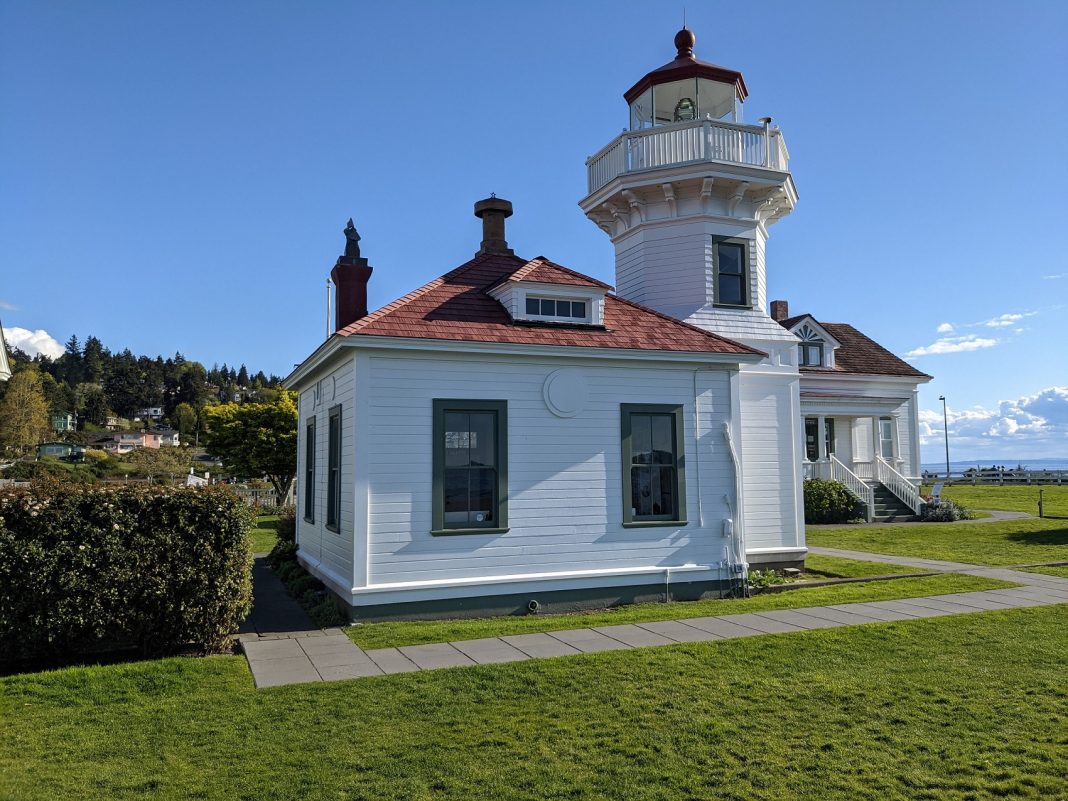The Mukilteo Lighthouse Park offers visitors access to art, a history museum, a scenic beachfront, and an educational walking tour. From various vantage points all along the shoreline, sunny days treat the public to gorgeous views of the Sound, Whidbey Island, the Mukilteo/Clinton ferry, and the skyline of downtown Everett. Year-round, guests to the park can access waterfront fire pits on the driftwood-lined beach, amble through the historic light station grounds, and appreciate deeply significant works of art.
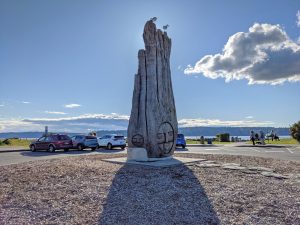
Two collaborative art pieces by Tulalip master carver James Madison and artist Joe Gobin are displayed at the park in acknowledgment of the site’s historical importance to the Coast Salish Tribes of the area and, in particular, the Tulalip Tribes of Snohomish County. A massive driftwood sculpture carved by Madison entitled Mother Earth stands at the southern entrance of the park. The center of the roundabout at the northern end of the park is occupied by a cubic metal sculpture crafted by Gobin.
The Tulalip lived at the site of the lighthouse park for over 1,000 years before Europeans and Americans occupied the area in the mid-1800s. Captain George Vancouver and his exploration crew landed in the area, which they dubbed Rose Point due to the abundance of wild roses, in 1792. In 1855, the Point Elliott Treaty was signed, and members of the resident tribes were forced out of the area and onto the Tulalip, Lummi, Port Madison, and Swinomish reservations.
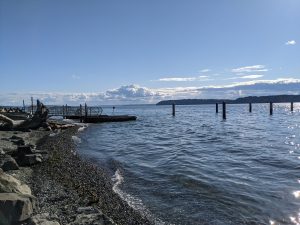
The 50 years following the enactment of the treaty saw the development of Everett as a prominent shipping port. In 1902, the United States Lighthouse Board, under the federal Department of Treasury, determined a lighthouse was necessary to facilitate the safe passage of the high volume of shipping vessels sailing through strong tides and inclement weather typical to the area. Congress appropriated federal funds for the construction of the Mukilteo lighthouse, and building commenced in 1905. The 38-foot lighthouse was completed in 1906 with a revolving Fresnel lens manufactured in Paris and a foghorn that could be heard up to eight miles away.
Over the years, the light lenses and foghorns have been updated. The functional equipment of the Mukilteo lighthouse is still maintained as a navigational aid by the United States Coast Guard. The City of Mukilteo and the Mukilteo Historical Society maintain the lighthouse structure, other historical buildings at the light station, and the beach portion of the park. A museum with historical exhibits is housed in the lighthouse itself, while one of the old lighthouse keeper’s residences now contains a gift shop. Currently, the gift shop is open by appointment only due to COVID-19 restrictions, but it is generally open to the public.
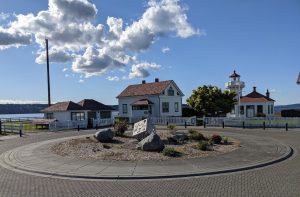
Numbered signs lay out a self-guided walking tour of the park, beginning at the northern entrance near the lighthouse. Visitors can read historical, geographical, and biological facts about the park on large displays. The tour is under one mile and is ADA accessible. Free brochures for the walking tour are available, and guests can also scan QR codes with their smartphones for audio recordings of the brochure material and additional facts.
South of the light station grounds, the tour leads visitors past a public boat launch that faces the southern end of Whidbey Island. A paved path continues alongside the beachfront. Piles of driftwood and scattered concrete fire pits separate the path from the beach. Facts about local marine wildlife are posted on signs near benches along the trail, and harbor seals are a common sight at the park. A playground and beach volleyball court lay opposite the beach near the midsection of the path. Two covered open-air shelters are available for reservations. The lighthouse grounds are rentable as event space, and the park provides ample photo opportunities for special occasions or spontaneous day trips. There is no fee to enter Mukilteo Lighthouse Park, but small parking fees are charged on posted days and times.

Visitors to the Mukilteo Lighthouse Park can expect an easy and educational seaside walk with beautiful views of the Mukilteo waterfront and Whidbey Island. The perfectly preserved lighthouse and the park entrances watched over by Tulalip art installations provide an air of historical significance to the picturesque natural landscape and the meticulously maintained grounds. The combination of modern amenities and local antiquity makes the park perfect for repeat visits.


